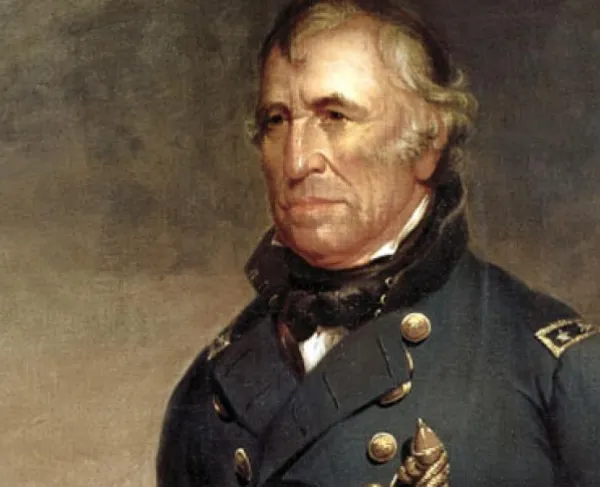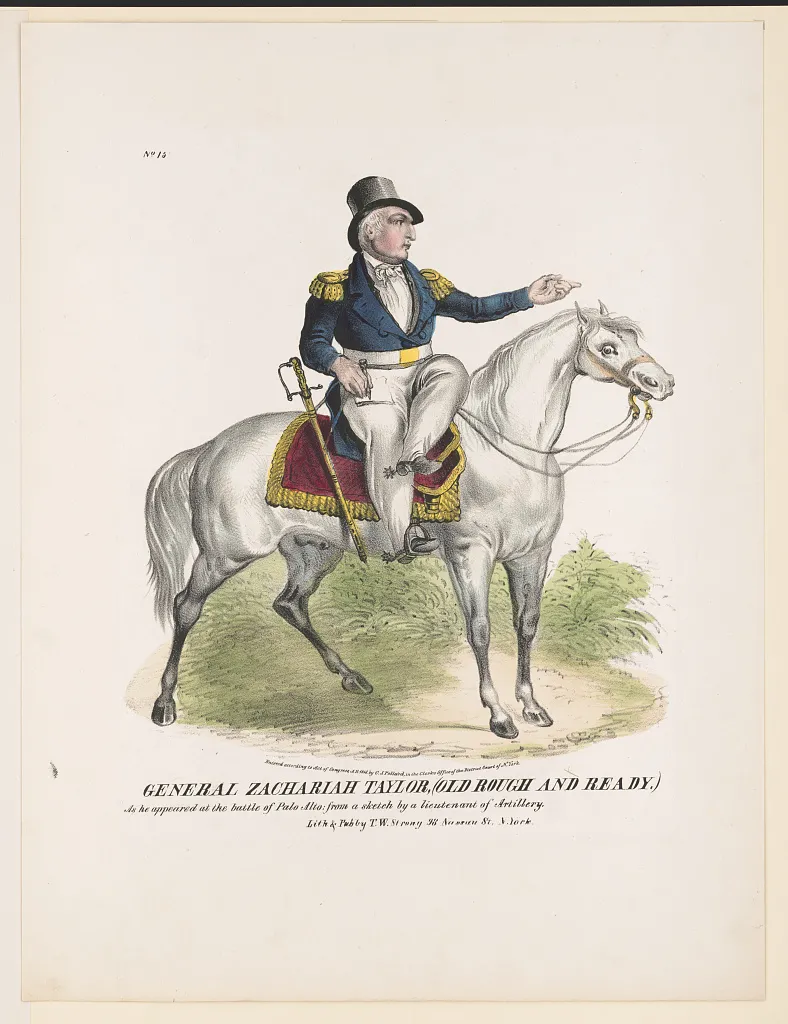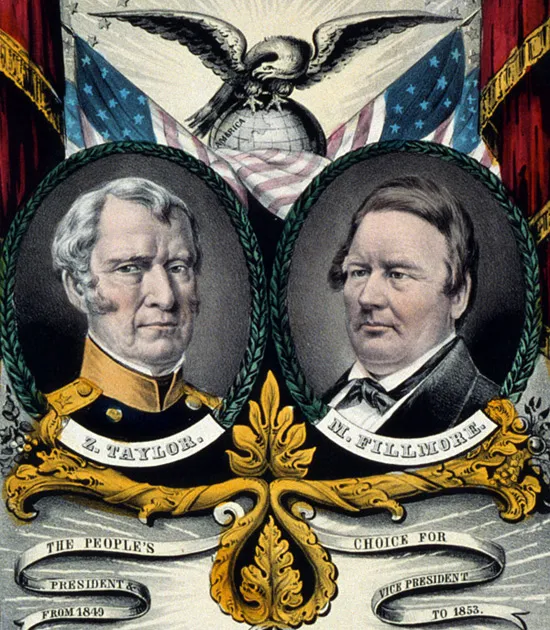Zachary Taylor

Zachary Taylor will always be remembered for his forty years of military service and sixteen months as the twelfth president of the United States of America. Taylor was born in Montebello Plantation, Virginia on November 24, 1784, just over a year after the Revolutionary War concluded. He was born to Sarah Dabney Strother and Richard Taylor, a veteran lieutenant colonel who served on George Washington’s staff. Shortly after his birth, the family migrated to Kentucky and raised Zachary Taylor and their other eight children on a tobacco plantation. In Kentucky, Taylor received a rudimentary level of education, and he learned about farming and horsemanship, but he desired a life of military service.
In 1808, Taylor left Kentucky, and he was granted a commission as a first lieutenant for the United States Army. He was assigned to a garrison at Fort Pickering in Tennessee. Two years later, he married Margaret Mackall Smith, and they had six children together. His oldest daughter, Sarah Knox Taylor, married future president of the Confederate States of America, Jefferson Davis, in 1835, but she died tragically three months after the wedding. His only son, Richard Taylor, served the Confederate Army as a lieutenant general during the Civil War. Zachary Taylor constantly moved from military outpost to outpost since he was commissioned at Fort Pickering, but the family settled in Baton Rouge, Louisiana on a plantation, and they owned an additional plantation in Mississippi.
Zachary Taylor quickly became a famous figure in the United States Army. He became a local hero when he fought in wars against the Native Americans, such as the Black Hawk War (1832) and the Second Seminole War (1837-1840). It was during these conflicts where Taylor earned the nickname “Old Rough and Ready.” While he fought Native Americans in a series of wars, the primary goal of his service was to protect preserved Native American lands from encroaching white settlers. Taylor did not completely understand the life of Native Americans, but he respected their military tactics of guerilla warfare.
However, Zachary Taylor went from local hero to national hero during the Mexican-American War. On April 25, 1846, Mexican forces attacked and killed U.S. troops commanded by General Zachary Taylor in a disputed territory. The Mexican forces then laid siege to Fort Texas, but Taylor fought back with the help of reinforcements and emerged victorious in the Battle of Palo Alto and the Battle of Resaca de la Palma. By May 13, Congress declared war on Mexico formally beginning the Mexican-American War. During the war, Taylor earned a name for himself defeating the Mexicans in the city of Monterrey, but he truly became a hero after his victory at the Battle of Buena Vista. At Buena Vista, General Taylor was left with half of his men because they were commanded to serve General Winfield Scott at Veracruz. However, when Mexican General Santa Anna intercepted a letter that revealed that General Taylor was short soldiers, he decided to attack. Even with half of his men, Taylor still was able to secure a victory, and it was this heroism that propelled him all the way to the presidency in 1848.

The election of 1848 was a contentious one. Occurring after the ratification of the Treaty of Guadalupe-Hidalgo, the United States had just won a sizable amount of territory from Mexico, and the nation was divided on whether these territories should permit slavery. General Taylor won the Whig nomination, and he ran without a definitive platform, but he was able to appeal to a wide array of voters considering his ownership of enslaved persons and military background. Taylor’s opponents were Democrat Lewis Cass, an advocate of “squatter sovereignty,” and Free-Soil candidate Martin Van Buren. Cass and Van Buren split the vote to elect Taylor as the twelfth president of the United States.

During President Taylor’s term the biggest debate concerned how to address slavery in New Mexico and California. Taylor ultimately decided to advise New Mexico and California to draft their own state constitutions where they decide whether to permit slavery and apply for statehood. Southerners were enraged at Taylor’s idea, and in 1850, Taylor held a conference with southern leadership, and they threatened secession from the Union. President Taylor, a passionate supporter of the Union, claimed that he would lead an army himself, and any person “taken in rebellion against the Union, he would hang … with less reluctance than he had hanged deserters and spies in Mexico.” Also, while southerners threatened to secede, northern leadership was also not satisfied with the nation's current state. They disliked the fact that slave trade was still occurring at the nation's capital, and they wanted it abolished. Evidently, sectional divides in the United States were present and growing during Taylor’s term in office, and he struggled to address the different requests of each political ideology as he did not want to be controlled by Congress.
With respect to foreign policy, President Taylor was instrumental in the Clayton-Bulwer Treaty of 1850. Essentially, Britain and the United States were in the process of negotiations to build a canal in Nicaragua, but the British were not in favor of the canal as the British had special status in the neighboring country of Nicaragua. In the end, the British and the Americans agreed to the Clayton-Bulwer Treaty which stipulated that no country take dominion or control over any canal built, and it was this agreement that strengthened the U.S. alliance with Britain, weakened Manifest Destiny as a policy, and reaffirmed U.S. interests in Central America.
President Taylor’s term was short, and he died suddenly of what was believed to have been gastroenteritis on July 9, 1850. After his sudden death, Millard Filmore assumed the presidency, and signed the Compromise of 1850 into law, which was legislation that would bring the country closer to Civil War. Unfortunately, President Taylor’s hopes of preserving the Union could not be salvaged as the country descended into Civil War nearly ten years after his death, but Taylor will always be remembered as a unique leader of his time given his military background and his refusal to appeal to the partisan politics of Congress.





